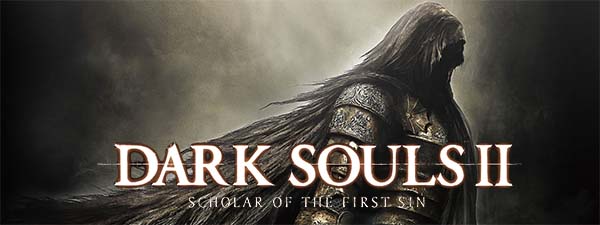
Hot off of playing Bloodborne's The Old Hunters DLC, and with Dark Souls III just over the horizon, I thought I'd get myself hyped up by playing through the re-release of Dark Souls II, Scholar of the First Sin. This version of the game is a next-gen enhancement of the original game that was released on the PS3, XBox 360, and PC a year prior, and it includes improved graphics, faster frame rate, and more challenging enemy-placement. It's available on PS4, XBox One, and PC, and is treated as a completely different game as the original version. It's not a DLC or a patch update (though it does include all three of Dark Souls II's DLC content).
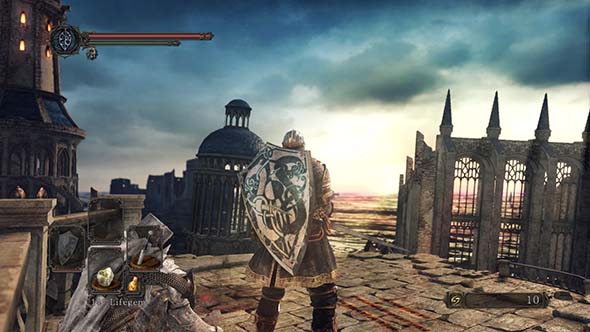
Scholar of the First Sin looks much smoother in motion, with higher resolution and framerate.
Lighting and textures are (at best) only marginally improved from the last-gen release.
I was honestly expecting Scholar of the First Sin's graphics to be considerably better than they are. In fact, I honestly don't think the graphics are much better than the last-gen release; I think the only difference is that it displays at full 1080 resolution and plays at a high end of 60 frames per second. Colors are a little more vibrant, and the game doesn't look as washed-out, but models and environments don't seem any more complex, and textures are only maybe slightly more detailed. Unfortunately, darkness still isn't as dark as it needs to be to make the torch as necessary for exploration as it was apparently intended to be. In pre-release demos, darkness was implied to be a complete fade to black that rendered objects within the dark invisible. Simply adjusting the brightness of your TV wouldn't change that. In the released version, darkness doesn't go completely black, so objects are only hidden if your TV brightness is low - lower than the recommended brightness level of the game. Even then, the release game looks brighter, and Scholar of the First Sin does very little to change that.
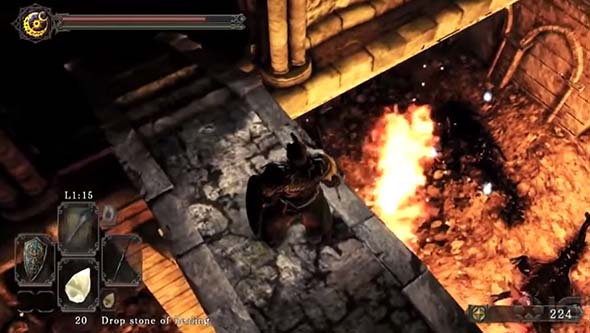
PREVIEW FOOTAGE showcased greater contrast between light and dark, and more detailed textures and geometry...
This graphical downgrade, the complete failure of FROM or Namco/Bandai to inform the public about it, and the resultant misleading marketing that repeatedly showed demos, screenshots, and footage that wasn't representative of the final product left a huge negative impression on a lot of players - especially those who pre-ordered it. That poor initial taste is probably a huge part of the reason why this game has gotten such a negative reception, even though that negative reception is mostly warranted. Scholar of the First Sin was an opportunity to wash that bad taste out of consumers' mouths and give us the game that was advertised, marketed, and pre-ordered. But Namco and FROM didn't bother.
Darkness is just rarely ever a meaningful component of the gameplay. Darkness may lower the range of target locks though, so even though I could plainly see enemies, I felt like I wasn't able to target lock them as readily as I could in the PS3 version. Even so, there's enough sconces laying around that you can light a sconce, extinguish your torch to fight, then re-light it at the sconce after all the enemies have been dispatched. It ends up just being some extra overhead if you care enough to bother with it, and not an essential element of gameplay.
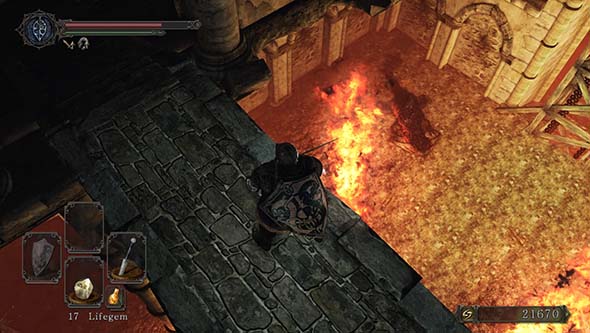
... FINAL PRODUCT shows low contrast between light and dark, frequent repeated textures, and simplified geometry.
Textures, character models, and world geometry don't look noticeably better. Many areas still have generally blander textures than what was presented in pre-release videos, and the textures noticeably repeat. World geometry also seems less detailed and intricate compared to pre-release videos, which takes away a lot of the personality that these preview areas exhibited. I was expecting Scholar of the First Sin to restore many of these superior textures and models from the previews, and I'm really disappointed that the game doesn't look better than it does.
Darker contrast in previews [LEFT] made real-time shadows more vibrant,
and creatures more threatening and mysterious than in the release build [RIGHT].
The improved textures also don't do much to help the game's generally bland art design. There aren't many visually-appealing locations in the game, as they are all just variations of run-down castles and forest paths. Most of them have pretty sparsely-decorated hallways with simple geometry that has little-to-no personality. There's nothing here that even approaches the ominousness of Demon's Souls' Latria, and the oppressive environments of Bloodborne make Dark Souls II almost serene by comparison. Again, Scholar of the First Sin does little-to-nothing to address this. No Man's Wharf probably remains my favorite location in this game, as it's one of the few locations that takes place in a fairly unique setting that actually utilizes light and dark for gameplay purposes.
So while the visual upgrade doesn't really add much to the game, the higher framerate definitely does make a noticeable difference. The PS4 doesn't seem to maintain a full 60-fps at all times, but it seems to always run better and smoother than the 20-30 fps of the PS3 version. Animations are much smoother, and ambient effects (such as foliage swaying in the wind) look much better. I admittedly had to spend some time re-adjusting to the game's speed. After coming back from the rapid pace of Bloodborne, this game almost seemed to be moving in slow motion, and the higher framerate probably contributed greatly to that sensation. That's not necessarily a bad thing; it's just a stylistic difference. Scholar of the First Sin plays smoothly (on the PS4), and it looks decent (even though it should have looked better)... [More]
ac8d6f88-ca6d-4def-983d-10eea4ed035b|2|4.0
Tags:Dark Souls II: Scholar of the First Sin, Dark Souls II, Dark Souls, From Software, online, PvP, co-op, covenants, summon, invader, invasion, phantom, shade, soapstone, covenant, torch, DLC, Crown of the Sunken King, Crown of the Old Iron King, Crown of the Ivory King
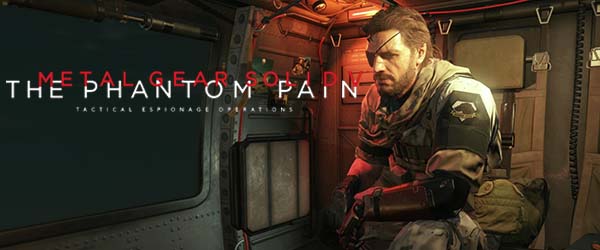
Are you one of the poor suckers who paid $30-40 for Ground Zeroes and were ready for The Phantom Pain to make up for your disappointment with what was little more than a glorified (and over-priced) demo? I wasn't, because I got Ground Zeroes for free from my PSPlus subscription around the same time that Phantom Pain was released. I was obviously disappointed with the demo's short length, and I didn't bother doing any of the side missions. But since I didn't pay for it, I wasn't as enraged as some other players might have been.
I actually really liked what little gameplay Ground Zeroes had to offer. The Guantanamo Bay arena was well-designed and offered some good infiltration challenge that tested my Metal Gear capabilities. The A.I. was surprisingly competent and adaptive - not so much that I couldn't exploit them occasionally, but still good. The graphics, lighting, and weather effects all looked outstanding. It was a fun experience. Not "forty dollars fun", but pretty fun. At least part of the battle at Mother Base should have been playable, and I didn't like that large elements of the story were hidden away in collectible audio tapes, but whatever.
I got Ground Zeroes for free on PSPlus, instead of paying $30-40 MSRP for a glorified demo.
Ground Zeroes gave me flashbacks to the phenomenal classic Sons of Liberty demo that came packaged with Zone of the Enders on the PS2. At least that only cost me a $3 rental, and I got to play Zone of the Enders too. After Ground Zeroes, I was looking forward to getting my hands on the much bigger Phantom Pain, and was optimistic that it would provide an equally good experience that would be worth the purchase price. Phantom Pain is a very long, very complicated, and very uneven game. So buckle up, friend. This is going to be a long review.
Table of Contents
After having written a lengthy blog post about how open world, sandbox game design almost necessarily puts the game's narrative in a state of limbo, I was amazed to start up Metal Gear Solid V and see the very first mission took my criticisms to heart. Of course, the game had already been released by the time I had written that opinion piece, so I can't take credit for having influenced its development, but it was still refreshing and gratifying. Anyway, in the very first mission, Ocelot tells you that Miller has been captured by Soviets in Afghanistan, has been tortured for intel, and has three days - tops - to live. You must rescue him before that time.
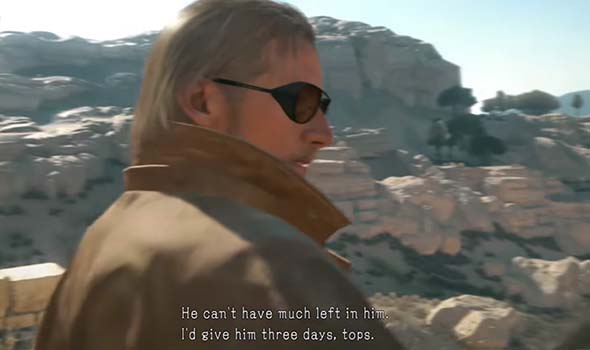
Ocelot gives the player three days to rescue Miller...
At first, I didn't put much stock in Ocelot's claim. After all, sandbox games are notorious for saying that something needs to be done ASAP, but they never have the balls to actually walk the walk and enforce that objective. Until now. When checking my map, I noticed something in the corner that I hadn't noticed in other sandbox games before: an "elapsed time" counter. The game was plainly tracking how long it was taking me to complete the primary mission objective. I treated this timer with a certain degree of skepticism. But sure enough, failure to rescue Miller within the allotted time actually results in a "Game Over"!
This is exactly how I feel that priority objectives in open world games should be handled: make it apparent to the player (through dialogue and/or explicit notification) that an objective is being timed or that it is otherwise a priority, and make sure that there are reasonable, perceivable consequences for failure to achieve that objective within the expected conditions. Then design some early-game quests or objectives such that the player is put in a position in which they can (or must) fail; thus, teaching the player that when the game says "do x or else", the game actually means it. I put down the controller and gave Hideo Kojima a standing ovation. But would this opening mission set a precedent that priority missions must actually be prioritized, and would that precedent stand throughout the rest of the game? Or was this just a one-off occurrence that would not be representative of the rest of the game? Regardless, a tone was plainly set for the rest of the game, and the stakes had been raised.
... Failure to rescue Miller within the allotted time results in his death and a Game Over.
Would this refreshing precedent carry over into the rest of the game? Well, sort of... [More]
11c3f412-b61e-422f-96c9-742ddb50d6fb|5|4.2
Tags:Metal Gear, Metal Gear Solid, Metal Gear Solid V: the Phantom Pain, Konami, Hideo Kojima, Fox Engine, tactical espionage operations, tactical espionage action, espionage, stealth, snake, Big Boss, Revolver Ocelot, Quiet, dog, Diamond Dogs, Afghanistan, Africa, open world, desert, sandbox, Fulton Recovery System, balloon, horse, Mother Base, helicopter, Soviet Union, Skull Face, Cipher, Zero, Sahelanthropus, Keifer Sutherland, David Hayter, ludonarrative, ludonarrative harmony, FOB, online, PvP, Metal Gear Online

Even though the player character in Dark Souls can be in a "hollow" state, the player never truly goes hollow. At least, not in the sense that NPCs and enemies have gone hollow.
According to Dark Souls' mythology, the undead are condemned to repeatedly wander Lordran in search of a cure, being unable to permanently die. But for virtually all such undead, this quest is futile. An undead can temporarily stave off hallowing by absorbing souls or infusing themselves with the humanity of someone else. Eventually, an undead dies one too many times, or is worn down by the daily grind of collecting souls, and loses the will to go on -- or is simply unable to continue collecting souls and humanity. When this happens, that undead becomes hollow, loses his sanity and free will, and continues to wander the world as a mindless zombie attacking any un-hollowed that it encounters on sight.
It is unknown how many "Chosen Undead" are brought to Lordran or the Undead Asyulm, but the Crestfallen Warrior at Firelink tells us that many have come before you. Is it possible that all hollows in Lordran were at some point "Chosen Undead", tasked by Frampt to retrieve the Lordvessel and re-kindle the dying flame?
Probably not.
A great deal of the hollows that you encounter in the game were likely former residents of Lordran, and there was no need to select a "Chosen Undead" until Gwyn's power faded to a "cinder", and the fire began to die. This presumably took a very long time - a whole "age".
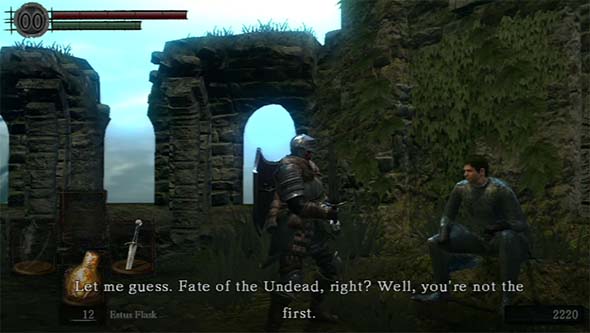
The Crestfallen Warrior informs us that we are not the first "chosen undead",
and suspects that we won't be the last either.
Avoiding hollowness with purpose
Many undead adventurers wandered into Lordran (or were abducted and taken there), and they struggle to hold onto their precious humanity for as long as possible, fighting for their lives in the fear that they, too will go hollow. Some, like the Crestfallen Warrior, resign themselves to the inevitability of hollowness, and find a sense of purpose in warning other new arrivals that they, too, are doomed. Others pursue some seemingly impossible goal or objective in the hopes that the journey will provide them with the sense of purpose necessary to avoid (or at least delay) hollowing. And yet others have taken up crafts or vocations such as blacksmithing, vending, or guarding something in order to keep them focused and avoid hollowing (and to exchange goods or services for the very souls that they need to stave off the hollowing). Keeping such a goal may help keep an undead partially lucid, but they also seem to begin to forget everything else, and only the knowledge of their quest or craft remains. Perhaps, the undead guarding various areas of the game were, at one point, tasked with protecting that place (or something within that place), but have long since lost their mind, and only that compulsion to defend has remained.
Going on "one final quest" seems to provide adventurers with enough focus to hold back hollowing.
But hollowing isn't just a thematic element reserved for non-player characters; hollowing is also a mechanic in the game that affects the player. Whenever the player character dies, you are reborn at the last bonfire in a hollowed state, unable to summon help from allies until you restore your humanity through the consumption of someone else's humanity. In Dark Souls II, hollowing further handicaps the player by cummulatively reducing your total health each time you die, and only restoring your humanity can refill your health meter. In both these cases, the player is not truly hollow; you are only in a state of partial hollowing.
It's unclear whether non-player characters are able to die and restore their humanity, or if deaths contribute to an irreversible progression towards hollowness. There are, after all, apparently hollowed NPCs such as the undead merchant in the Undead Burg and blacksmith Lenigrast in Majula who are sane enough to have kept their shops open. The presence of NPC summon signs hints at the possibility that they, too, are capable of restoring their own humanity through the same mechanisms that you can, but the game itself justifies this with ambiguous appeals to "time distortion" and hypothetical parallel realities that obfuscates the matter - particularly where Solaire and Lautrec are concerned.
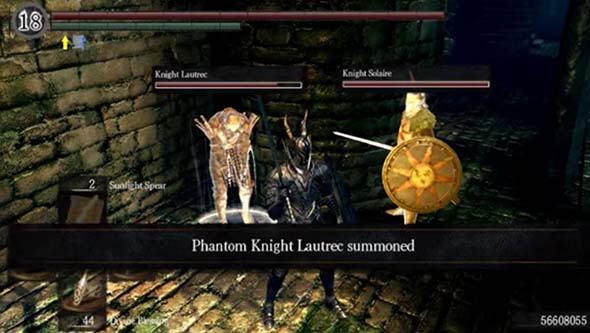
Summoned NPCs may recover humanity as you do, or they're from another time or dimension, or both.
Solaire's dialogue refers to "heroes centuries old phasing in and out.". Solaire may be using the words "world" and "time" interchangeably. This seems to be the game's justification for how summoning works: you may be literally summoning someone from a bygone era into your own time period. Anytime, you are summoned to someone else's world, you are also being transported to another time (past or future, depending on whether or not you finish the game). Solaire and Lautrec seem to somehow come from another time or dimension, but other characters definitely seem to exist within your world and time: Andre, the Crestfallen Warrior, Rhea and her companions, Big Hat Logan and his apprentice, and so on are all undead who have seen many other "Chosen Undead" come to Lordran seeking their destiny.
In any case, it's not until an undead "gives up" that the hollowing process becomes complete. What do we mean by "giving up"? For an NPC, it means that they gave up on life and went hollow, and the player typically ends up putting them down. For the player, it means that you stop playing the game. As long as you continue to play the game, then your character will continue to hold onto a sliver of humanity and maintain his or her sanity for a little while longer. When you put down your controller for the last time, you have condemned your character avatar to finally succumbing to hollowness, whether you recognize it or not... [More]
ce0263eb-66fa-4c8b-b624-2655b7809cd6|3|4.7
Tags:Dark Souls, Dark Souls II, Scholar of the First Sin, Demon's Souls, From Software, undead, Lordran, Drangleic, hollow, hollowing, humanity, souls, zombie, Solaire, Lautrec, Blacksmith Lenigrast, Crestfallen Warrior, Andre of Astora, Rhea of Thorolund, Seigmeyer of Catarina, Big Hat Logan, Gwyn, Sunlight Maggot, God of War, covenant, Warrior of Sunlight, Gravelord Servant, vagrant, perma-death, NPC, lore, Dragon's Dogma, pawn, online, multiplayer, PSN, XBox Live, Steam, emergent narrative
A friend of mine introduced me to the social game SimCity Buildit, currently available for mobile devices and tablets. Since I currently lack a strong mainstream entry in the SimCity franchise, I thought I'd see if this social game does anything to fill my long-neglected need for spline-reticulation or if it presented any new features that could be worth pursuing in a full PC version of the game. I don't generally play social games. I dabbled a bit with CivWorld and Sims Social, but that's about it. So I lack a lot of reference for judging SimCity Buildit in terms of other social games.
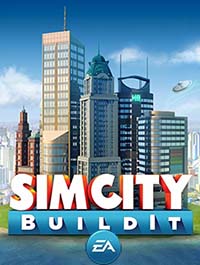
Most of the fundamental SimCity elements are here: you set housing, commercial, and industrial zones, link them with roads, and build service buildings in order to satisfy various citizen needs within a certain radius. None of the deeper simulation elements of newer city-builder games are there. Individual citizens don't exist; there's just an abstract population, and happiness levels are set for each residential building. It's understandable for the limitations of the platform, and it provides a retro quality that reminds me of the good ol' days of SimCity 4.
But since this is a social game, the design has to put up numerous barriers to restrict the player's freedom to construct the city that they want. You have to "level up" your city by building new buildings. The number of residences that you can build, as well as the availability of industry and shops are also limited by your level or by the city population.
You also don't really have an economy to manage - at least not in the traditional sense. Citizens don't work at factories and shops. Instead, these buildings create certain building materials that are used to "upgrade" your residences into higher-density buildings that generate more tax revenue. This provides the core challenge of the game: you have to build the necessary materials in order to upgrade your buildings. Each of these materials take different amounts of real time to construct in your factories and shops (or you can buy the materials you need through real-money micro-transactions). As you level up, you'll unlock new materials, which residences will suddenly demand in order to upgrade their buildings.
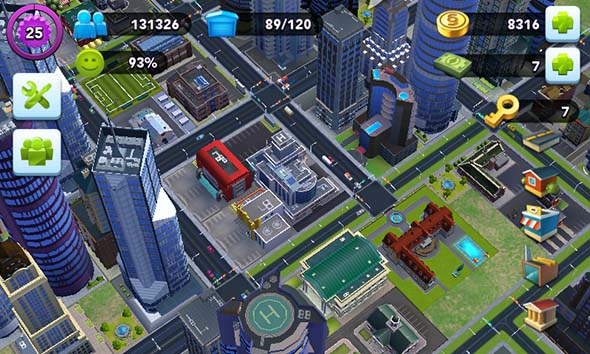
You don't have to manage employment, tax rates, or city ordinances; only resources and service coverage.
The ability to upgrade a building seems to be limited by its happiness level. Only happy residences can be upgraded, so you also need to provide city services such as power, water, waste disposal, emergency services, entertainment, and so on. But these services are very frustrating because they are tied to your city level. New services or entertainments become unlocked when you level up. That's fine. But once those services are unlocked, your entire city starts demanding them, and happiness plummets (as well as tax income, which is tied to happiness) because you don't already have the infrastructure ... [More]
32090159-6899-4ab5-bbd5-d5b6d927f5a0|0|.0
Tags:SimCity, SimCity Buildit, Electronic Arts, EA, Track Twenty, online, social gaming, mobile, mobile gaming, Facebook, Google Play, city simulation, public service, disaster, industry, supply
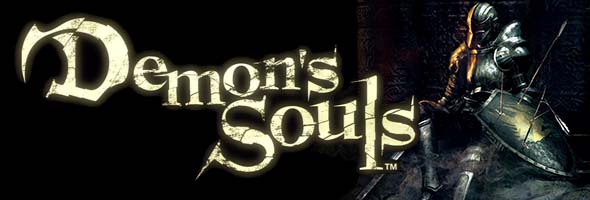
With a new generation of consoles coming into their own, the lifespan of the PS3 and XBox360 is rapidly coming to an end. It's not quite as monumental as the end of the PS2's lifecycle, which is arguably the single best gaming console ever made! With the PS3 and XBox360, our console games started to have consistent online functionality, and with online functionality comes a sad side-effect: a game's life-span is finite. I can always go back and play my favorite PS2 games (like Silent Hill 2, Metal Gear Solid 3, Ace Combat 4, Ico, Shadow of the Colossus, Gran Turismo 3, and Devil May Cry) and have pretty much the same experience that I had the first time I played. But I won't be able to do that with some of my favorite PS3 games, because some of them have online features that won't remain active forever.
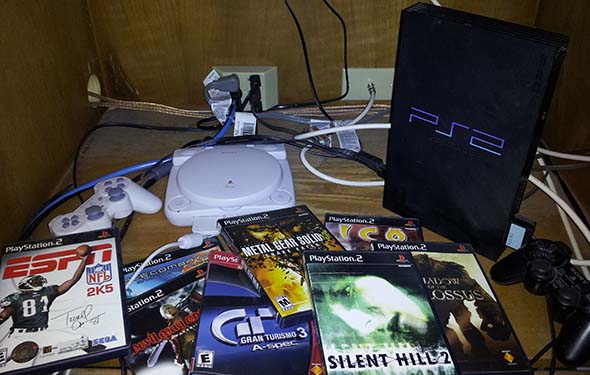
As long as my PS2 is functional, I can always go back and re-play my favorite PS2 games.
PC gamers have been dealing with this problem since the dawn of the internet, but they have work-arounds. PC Games can be modded to support direct TCP / IP connections in order for their online communities to stay online. Hypothetically, you could keep your favorite MMO alive for yourself and your circle of friends in this fashion. But with console games, there are much more significant technical hurdles to overcome, and when the producer shuts down the servers, that is basically the end of that game.
And that is exactly what is going to happen some day with my favorite PS3-exclusive: Demon's Souls.
Every console has its defining games - those games that are reasons for owning the consoles. The original PlayStation had Final Fantasy VII and Metal Gear Solid, the Nintendo 64 had Goldeneye, the Dreamcast had Shenmue and Soul Calibur, the XBox had Halo, GameCube had Resident Evil 4 and Eternal Darkness, the PS2 had Shadow of the Colossus. For me, Demon's Souls is that game for the PS3: the game that makes owning a PS3 worthwhile.
Demon's Souls is a game that completely redefined the way that I think about gaming. My ideas about how a player can interact with a game world and with other players were completely turned on their head with this game. So I want to take a moment to pay tribute to this masterpiece of interactive art with a full review while its servers are still up and running. And maybe - just maybe - I can sell a copy or two to some new players.
Deep and addictive hack 'n' slash action
The gameplay is based on a simple control configuration in which weapons are mapped to the left and right hand and controlled with the left and right shoulder buttons (respectively). The design is reminiscent of a simplified version of FROM's other major game franchise: the mech-combat sim Armored Core. Weapons equipped in the right hand have a basic attack and a heavy attack, and weapons or shields in the left hand have a block and heavy attack (sorry, lefties, no left-handed characters for you!). These basic controls are very simple, and any player can start hacking and blocking away as soon as they pick up the controller. But more advanced controls and variations in weapon functionality make this seemingly-simple combat system very deep.
Each weapon class has different movesets, ranging from the slashing of a sword to the thrusting of a spear, to smashing of a giant hammer. And shields (and some off-hand weapons) have an advanced parry feature that allows you to stun and counter an attacking foe to land a critical hit. You can also attack while running or out of dodges in order to keep a foe guessing. Mastering these various features takes a little bit of time, but it is immensely rewarding when you finally have the skills to go toe to toe with a giant, butcher-knife wielding skeleton with confidence. But don't get overconfident, because this game will punish you for every mistake!
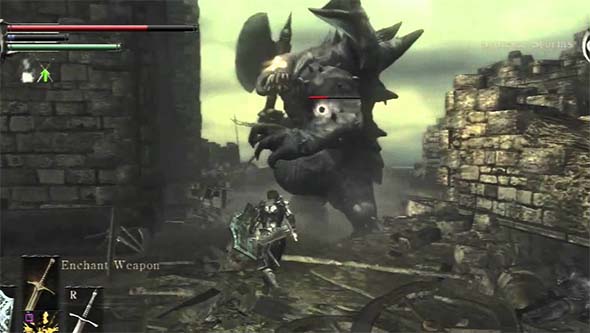
With patience and practice, you'll soon stand confidently before the Vanguard that killed you in the tutorial.
If you die, you lose all your accumulated souls (i.e. "experience"), and must restart the level from the beginning! But there is a shining glimmer of hope: you have one chance to reach the spot where you died in order to recover your lost souls. If you get there... [More]
2d2c2b68-3795-49ce-9bcb-9c3537a79e64|5|4.2
Tags:Demon's Souls, From Software, Atlus, Sony, PlayStation, PS3, PSN, exclusive, RPG, adventure, hack and slash, survival horror, online, PvP, co-op, summon, multiplayer, invader, invasion, phantom, hardcore, mindflayer, Boletaria, Stonefang Tunnel, Tower of Latria, Shrine of Storms, Valley of Defilement, Hidetaka Miyazaki, retro review
|

| 12 | | | | | | | 60 | | 11 | | | | | | | 55 | | 10 | | | | | | | 50 | | 09 | | | | | | | 45 | | 08 | | | | | | | 40 | | 07 | | | | | | | 35 | | 06 | | | | | | | 30 | | 05 | | | | | | | 25 | | 04 | | | | | | | 20 | | 03 | | | | | | | 15 | | 02 | | | | | | | 10 | | 01 | | | | | | | 05 |
|